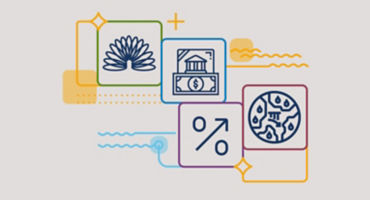Short-term: Oil
As we look out to 2024, the petroleum complex continues to leave the door open for both compelling bear and bull cases. Bears center their concerns on soft demand caused by macro weakness. Bulls focus on supply-side initiatives intended to maintain a market that went into deficit midway through 2023. There were multiple reasons for this shift, including production cuts by OPEC+ nations, ongoing discipline from US shale producers, and a cessation in US government releases from the Strategic Petroleum Reserve. We now see a higher probability for upside asymmetry in oil prices. The market may be underestimating the impact on oil balances of OPEC+ actions, and demand indicators are generally showing resilience. We believe largest current the oil market deficits in several quarters should support prices and the roll yield throughout 2024.
Medium-term: Copper
The threat of a recession and the tepid but improving Chinese economy are still pressuring near-term industrial metals sentiment. Not only do we believe this pressure may be short lived, but overall, our expectations are not as dire. Our economic leads indeed point to a bottoming of industrial activity in China and other large countries, and our medium- to long-term outlook for metals differs from prevailing sentiment. As governments and the private sector place greater emphasis on combatting climate change and driving decarbonization — both highly metals-intensive efforts — we anticipate increasing demand.
Within base metals, copper continues to be our highest-conviction structural position. Our research shows supply deficits widening to more than 6,800 kilotons by 2030 (Figure 1). Incentive costs have already inflected sharply higher because of rising capital costs, geological and geographical constraints to future supply, and reluctance among metals and mining company management teams to commit capital to new projects. We expect this pricing trend to continue (Figure 2). Combined, these dynamics may yield a very attractive medium- to longer-term valuation for copper. The commodity looks severely undervalued, particularly if the supply/demand balance continues to tighten over the next few years.













Trends and transformation distilled: Our 2024 outlook in brief
Our experts explore investment opportunities and risks for the year ahead.
Multiple authors